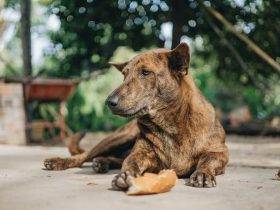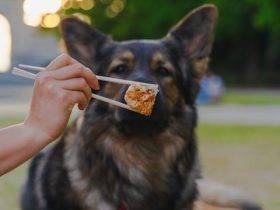Choosing the Best Wet Dog Food
Wet dog food can provide many health benefits for your furry friend compared to dry kibble. With high moisture content that mimics their natural diet, wet food is often easier for dogs to eat and digest. However, with the variety of wet dog food options available, it can be difficult to choose the best one. This comprehensive guide will help you understand the key factors to consider when selecting wet food and make a well-informed decision for your pooch.
Understanding Nutrition Labels and Ingredients
The first step is examining the nutrition label and ingredients list to assess the quality and value of the food. Some things to pay attention to include:
Protein sources: Look for meat such as chicken, beef, salmon or lamb as the first ingredients. Meat provides essential amino acids, protein and nutrients. Avoid fillers like corn, wheat or soy which provide little nutritional value.
Fat content: Fat delivers energy and essential fatty acids. However, too much can lead to weight gain. Aim for 20-30% of calories from fat, depending on your dog’s lifestyle and energy needs.
Carbohydrates: Carbs are not as nutritious for dogs as meat. Less than 30% of calories from carbs is ideal. Avoid high-starch fillers like corn, potatoes, and tapioca.
Fiber: Look for 2-5g of derived fiber per 1,000 kcal to support digestive health. Soluble and insoluble sources like beet pulp and cellulose are best.
Calcium and phosphorus ratio: The ideal calcium to phosphorus ratio for growth and bone support is 1:1 to 1.2:1. Too much calcium can interfere with phosphorus absorption.
Supplements: Omega fatty acids, probiotics and prebiotics support skin, coat and digestive health when included. A balanced level of vitamins and minerals is also important.
Calorie content: Check the calories per cup/can and feed the amount required for your dog’s size as per feeding guidelines on the label. Over or underfeeding can lead to health issues.
Conducting this nutrition analysis allows you to compare products and identify wet foods with premium, animal-based ingredients versus fillers or additives.
Types of Wet Dog Food
Wet dog foods fall under two main categories:
Canned: Produced by cooking ingredients at high temperatures under pressure. This retains more nutrients vs extrusion in dry foods but some heat-sensitive vitamins may degrade. Canned foods have around 78-82% moisture content.
Pouch: Uses a retort sterilization technique instead of high heat cooking. Nutrient retention is higher than canned while moisture levels range from 78-85%. However, pouches use more plastic packaging which is less environmentally friendly.
Within canned and pouch types, wet foods can further be classified based on their formulation:
Complete and balanced: Meets Association of American Feed Control Officials (AAFCO) standards with precise levels of vitamins, minerals, proteins etc to be nutritionally complete on their own.
Limited ingredient diets: Contains limited main protein sources ( chicken, salmon etc) and fewer additives/carbohydrates for dogs with food sensitivities.
Grain-free: Contains no grains like corn, wheat or soy but relies more on alternative starches from ingredients like potatoes, peas or lentils instead.
Raw: Contains raw, dehydrated meat and bone for natural gut health and oral benefits but carries risk of bacterial contamination if not handled safely.
Choosing the right type based on your dog’s needs, breed, activity levels and any dietary restrictions is crucial for optimal health and wellbeing. Consulting your veterinarian can help narrow down the best option.
Other Considerations When Buying Wet Dog Food
In addition to nutrition quality and type, also factor in:
Size and Life Stage: Puppies, adults and seniors require different calorie and nutrient levels. Look for formulas suited for your dog’s life stage.
Flavor Variety: Rotating flavors provides mental stimulation for dogs and prevents boredom or picky eating over time. Many brands offer 3-4 flavors.
Packaging Type: Beyond cans and pouches, some foods also come in tubs or squeezable tubes for easy feeding of sick, elderly or small dogs.
Preservatives: While preservatives help prevent bacterial growth, natural tocopherols and rosemary extracts are gentler alternatives to BHA, BHT and ethoxyquin.
Firmness: Wet foods range from a soft gravy texture to chunks in gravy or large pieces. Consider your dog’s chewing ability and preferences.
Irradiation: This process destroys bacteria without cooking but some owners prefer non-irradiated foods. Manufacturing standards are important here.
Sustainability: Choose brands using sustainable sourcing, recycling programs and minimal plastic or aluminum packaging wherever possible.
Price: High-quality ingredients generally yield premium prices but compare cost-per-serving to find the best value for nutrition.
With these multi-dimensional evaluation criteria, you can select a wet food brand that best meets your dog’s unique needs within your budget constraints.
Top Wet Dog Food Brand Reviews
Now that the essential factors are clear, here are some of the top-rated wet dog food brands available with their key strengths:
1. Hill’s Science Diet
- Veterinarian recommended with precise balanced nutrition developed by pet nutritionists.
- Variety of Life Stage and breed specific formulas, dental care and digestive health lines.
- Premium meat sources and prebiotics/probiotics support all-round wellness.
- Range of textures from gravy to chunks to please most dogs.
- Quality control and stringent manufacturing standards.
2. Royal Canin
- Expert nutrition tailored to breed sizes, Life Stages and health conditions.
- Ideal calcium/phosphorus ratio and omega-3/6 fatty acids for bone and skin health.
- Limited ingredient diets available for allergy testing and management.
- Firm chunks/slices texture offers dental benefits and mental stimulation.
- Highly digestible ingredients and natural preservatives.
3. Merrick
- USDA certified organic and natural ingredients including free-range meat and tasty toppers.
- Grain-free limited ingredient options for sensitive dogs.
- Palatability enhancers encourage feeding and prolong freshness.
- Natural preservatives and minimal additives for clean nutrition.
- Firm- chunks texture and range of flavors, pack sizes and formats.
4. Wellness Complete Health
- High protein diet from deboned meat, fish and poultry for muscle growth.
- Whole grains like oats provide energy, fiber and antioxidants.
- Probiotics, prebiotics and antioxidants strengthen gut and immune function.
- Balanced macro and micronutrients formulated by a veterinary nutritionist.
- Textures range from gravy to pieces suitable for different chewing needs.
5. Stella and Chewy’s
- Freeze-dried raw coating on kibble-sized meat morsels for natural benefits.
- High in protein, loaded with nutrients and low in carbs for energy.
- Variety of toppers enhance palatability and mental stimulation.
- Limited ingredients for allergen testing or chronic health conditions.
- Nutrient-dense adheres to AAFCO profile standards for complete nutrition.
6. Open Farm
- Humanely farmed meat from small family farms in Midwestern USA.
- Grain-inclusive formulas provide balanced nutrition for energy.
- Wide array of single protein and beef options for sensitive stomachs.
- Palatability enhancers for problem eaters and no added colors/preservatives.
- Balanced minerals and vitamins for all-rounded wellness at great value-
These brands deliver transparent nutrition from ethical sources, backed by research. Rotating flavors ensures long-term gut, oral and skin health for dogs.
Choosing the Right Wet Food for Your Dog
To summarize, consider the following steps to choose a suitable wet dog food:
- Evaluate protein quality, fiber, fat and carb content from labels and ingredients.
- Check feeding guidelines and choose the right product type based on your dog’s needs.
- Assess additional factors like textures, flavors, preservatives and packaging types.
- Review top brands based on formulation, digestion support and quality standards.
- Consult your vet about ideal choices for breeds, lifestages, allergies or medications.
- Read reviews to compare value for nutrition, palatability, veterinary support and taste.
- Start with suggested serving size and monitor weight, energy levels and poop consistency.
- Gradually switch flavor or brand if issues arise to find the best match for your furry friend.
With careful analysis of these core criteria, you can zero in on premium wet foods enriched with only the best nutrients for your dog’s healthy life and long-lasting well-being. Regular vet checkups help refine the ideal diet further. With the right choice, wet food ensures complete can.
Helping Your Dog Transition to Wet Food
While wet food offers clear nutritional advantages, some dogs may need time adjusting to the change in taste and texture from dry kibble. Here are tips for a smooth transition:
Go gradual: Slowly increase the ratio of wet to dry kibble over 5-7 days until fully transitioned. This avoids upset tummies.
Mix it up: Blend wet and dry together or stuff kongs/interactive feeders with wet morsels between kibble. Masking dry pieces in gravy trains their taste buds.
Add toppings: Topping wet chunks or gravy with tasty meat bits, veggies or broth hydrates kibble for extra enticement. Peanut butter is a healthy treat.
Vary flavors: Switch up flavors daily to prevent food aversion. Novel smells excite dogs more than the same old fare.
Feed separately: Feeding meals away from other pets prevents any begging or possessive guarding behaviors around high value food.
Check poop: Soft, messy stools indicate too fast a switch. Slow down the ratio and add dietary fiber supplements temporarily.
Be patient: It may take 1-2 weeks for reluctant eaters to accept the wet texture fully. Don’t give in to other demands at mealtimes.
Try different brands: Some dogs simply dislike certain tastes. Alternating brands widens taste exposure over time.
With positive reinforcement training using short training sessions focused around mealtimes, most dogs learn to relish their wet dinners. Monitor weight and energy levels too.
Caring for Your Dog’s Teeth with Wet Food
As important as nutrition, dental hygiene impacts overall health. The soft texture and gravy in wet foods minimally cleans teeth, so brush daily for best oral care. Some additional tips:
- Choose firm, chunky wet foods or dental chews/treats designed to scrape plaque as teeth crunch down.
- Rinse after meals with water or special canine rinses containing enzymes to freshen breath too.
- Add a pea-sized smear of enzymatic toothpaste on your finger for pups to lick/chew for 2 minutes daily.
- Schedule checkups every 6 months for professional cleanings if tartar builds up quickly. Early intervention prevents costly extrasctions.
- Supplement diets with raw meaty bones 2-3 times weekly. Chewing stimulates gums and polishes teeth naturally.
- Avoid sugary treats, chews or toys that contribute to plaque/tartar buildup over time if not brushed off daily.
With both diet and consistent home dental care, you give your furry friend sparkling chompers and fresher breath for many happy years together. Their rewards are pets, tummy rubs and playtime!
Best Wet Dog Foods for Specific Health Needs
As we explored, high-quality brands provide formulations targeted at various life stages, body types and health conditions. Here’s a quick dive into some top picks:
For Puppies
- Hill’s Science Diet Puppy (Chicken, oats recipe): Helps support bone and muscle growth.
- Royal Canin Maxi Puppy (Shredded chicken & vegetables): Optimized nutrients puppies need.
- Merrick Grammy’s Pot Pie (Chicken stew bites): Wholesome proteins and easy-to-digest pieces.
For Senior Dogs
- Hill’s Science Diet Adult 7+ (Chicken liver entrée): Joint and digestive support.
- Royal Canin Veterinary Diet Gastrointestinal Low Fat (Fish menu): Gentle formulation.
- Wellness Complete Health Senior (Chicken stew): Balanced for aging needs.
For Weight Management
- Hill’s Science Diet Weight Management (Chicken in gravy): Calorie-controlled kibble mix.
- Royal Canin Satiety Support (Salmon entrée): Manages hunger between meals.
- Merrick Real Chicken & Sweet Potato (Chicken stew): Low cal, high fiber for satiety.
For Sensitive Stomachs
- Hill’s Science Diet Sensitive Stomach & Skin (Chicken & rice recipe): Hypoallergenic.
- Royal Canin Veterinary Diet Hydrolyzed Protein (Chicken menu): Ultra-gentle formula.
- Open Farm Grain-Free Limited Ingredient Chicken (Stew bites): Single protein source.
With the right nutrition and caring tips, you can keep your furry family member fit, happy and healthy for many years to come. Let me know if any other canine diet topics would be helpful!






Leave a Reply